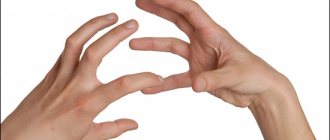The biographical method in psychology is a real opportunity to study the life circumstances and goals of an individual or group of people and, if necessary, their further correction. During the analysis, autobiographies, all kinds of documents, tests, interviews, memories of other people, and works produced by a person can be used as sources of information.
Using the biographical method
The biographical method in psychology is a method of psychological influence, the study and analysis of life situations that happened to an individual or group of people. The psychologist considers even seemingly insignificant moments that could somehow influence the development of personality, the formation of values, opinions and positions. He suggests using those that are positive in nature for the development of personal qualities.
The specialist pays special attention to those periods when a person was experiencing a crisis. And it doesn’t matter whether it’s age or normative. At such moments, serious mental changes usually occur, which as a result change behavior, habits, and relationships with others. The latter leads to conflict situations.
Some negative character traits become aggravated, and then become fixed. This happens if the individual’s renewed needs are not met, if society and the people around him do not allow his ideas to be realized.
Psychologist and Doctor of Pedagogical Sciences B. G. Ananyev spoke a lot about the biographical method of studying human personality. He associated it with the theory of individuality. In his opinion, the main task is to become more familiar with the life path of each individual person. Ananyev believed that the biographical method is the study of the influence of the social environment on the formation of the human personality. And it happens not only within one subject, but also within society, the state, and the era as a whole. An important role here is played by the surrounding people, who have either a good or bad attitude towards the individual.
Ananyev set the following tasks for the biographical method:
- Determine the psychological status of a person.
- Identify the main traits of his character.
- Recognize abilities.
- Understand what caused certain turning events.
Interestingly, the biographical method is applicable both to the study of an individual and an entire group.
The development of this psychological research method is associated with the humanities. We can say that this is a biographical genre, which involves a detailed description of the life path, all the important events for a person, the moments that led to his formation as a person.
Historical biography
Plutarch. "Parallel Biographies"
Plutarch
Historical biography is the earliest type of biographical writing. The main trends in historical biography were already outlined in Plutarch's Parallel Biographies. Its peculiarity was the strict canons of biographical writing, according to which the biographies of monarchs, saints and other historical figures were built. The author deliberately obscured his “I”. At the same time, the character acted in the context of his historical time, and his meanings were correlated with the cultural and historical values of the era in which he lived.
“By engaging in historical research, we retain in our souls the memory of only the best and most recognized characters, and this allows us to resolutely reject everything bad, immoral and vulgar that our inevitable treatment of the surrounding world confronts us, and to turn the peaceful and tranquil world of our thoughts only to the exemplary "(Plutarch) (8, p. 343).
G. Vasari. "Biographies of the most famous painters, sculptors and architects"
New eras gave birth to their chroniclers, who continued to interpret biographical characters according to the same canons: the personality acquired the features of a mythological hero who reflected the values and expectations of the official authorities.
Giorgio Vasari, an Italian painter and architect, following in the footsteps of Plutarch, in the book “Lives of the Most Famous Painters, Sculptors and Architects,” gave a certain type of biographical writing, where the living artist was elevated to the rank of an earthly deity. The high style of such biographies excluded a subtle psychological analysis of the individual. Everything household, base and, by and large, human was removed. For example, the biography of Leonardo da Vinci begins with the following words:
“We constantly see how, under the influence of the heavenly bodies, most often in a natural and even supernatural way, the greatest gifts are abundantly poured onto human bodies, and that sometimes the same body is abundantly endowed with beauty, charm and talent, which come together with each other in such a combination that wherever such a person turns, his every action is so divine that, leaving behind all other people, he reveals himself to be something given to us by God, and not acquired by human art” (Vasari) (1, p. 197).
Historiography of the 19th-20th centuries
This line continued in Russian historiography in the works of Peter I’s student V.N. Tatishchev, the historian of the Catherine era Prince M. Shcherbaty, professor and rector of Moscow University S.M. Solovyov, his student V.O. Klyuchevsky and others. They created biographies of Russians “great men” based on the same normative requirements of official biography. The historical and cultural context set the personal meanings and positions of the characters, while the author’s civic position was quite noticeable.
The spiral of development of this direction in the understanding and interpretation of human life continued to increase its turns in subsequent centuries. This approach has not lost its relevance today. “Great men” have transformed into modern political figures and continue to be characters in more and more biographies. An example of this biographical style is the latest series “Historical Silhouettes” (American Presidents: 41 Historical Portraits from George Washington to Bill Clinton. Ed. Yu. Heideking). This turn is comparable to the historical-biographical approach.
Pros and cons of the biographical method in psychology
The biographical method has several advantages:
- Dynamism. A psychologist studies a person in dynamics, and not in statics. Thanks to this, he sees how he lived before, what and why has changed to this day. It becomes clear how the individual built relationships with others, whether it was difficult for him to adapt to the social environment, what values and lessons he learned. All this together helps the psychologist draw up a plan for further work.
- There is no need for preparation. It will, of course, be better if the specialist has a sociological education. However, a survey can also be conducted by someone who is completely unfamiliar with sociology. Thus, employers often use the biographical method when hiring new employees.
- During the session there is a friendly, relaxed atmosphere. The conversation is so subtle and delicate that the person does not feel pressure at all. On the contrary, it seems to him that he is simply talking with a good friend.
- There are many sources. For example, if there is a need to study a public person, a psychologist can use recordings of his speeches, interviews, communicate with someone from his social circle, etc. He takes into account all the information available to him.
- Abundance of facts. The psychologist focuses on events that took place in a person’s life. He studies and then analyzes the prerequisites, reasons, motives. It is important for him to build a logical chain, to find out what led to the individual making this or that decision.
In addition to the advantages, the biographical method also has a number of disadvantages:
- Descriptiveness. In many cases, events or actions have nothing to do with feelings, emotions and sensations. Although the latter are actually an integral part of the psychological portrait. That is why small errors are often allowed in the biographical method. In addition, psychologists sometimes have to draw conclusions based on assumptions.
- Large expenditure of time and effort. The biographical method is quite labor-intensive. It is necessary not only to obtain all the necessary information, but also to carefully analyze it. This is not always possible.
- Individuality. Take, for example, using this method when hiring a potential employee. Of course, the employer can study his biography and select optimal working conditions and a suitable position. But this is information about one person. The conclusions drawn from it are unlikely to be suitable for anyone else.
- Subjectivity. It appears if a psychologist communicates with a person’s family and friends to draw up a portrait. They may exaggerate, express their personal point of view, or hold back some points. As a result, the specialist finds himself in a dead end.
- Lie. Not every person is able to tell unpleasant facts from their life. Everyone wants to show their best side, so sometimes people either embellish or leave things out. Even an experienced psychologist does not always immediately recognize deception. Therefore, the psychological portrait of the individual turns out to be slightly incomplete and blurred.
And another significant disadvantage is forgetfulness. During the session, a person needs to remember some important moments from his past. But memory cannot always reproduce all the necessary information. Therefore, the psychologist often receives distorted data.
Biographical Method Techniques
There are only 7 of them:
- Private bussiness. An analysis of diaries, autobiographies, questionnaires, characteristics and other similar papers is carried out. This also includes photographs and letters. This helps to understand why a person developed certain character traits, how his psychological maturity manifests itself, and in what other ways his inner world can be explored. In a personal file, attention is paid to the individual’s social background, environment, the type of information he receives from surrounding sources, and major life events.
- Questionnaire. This biographical method technique is most often used when interviewing an applicant. By filling out personal data, a person systematizes memories from the past, and also provides information that is not available in other sources, for example, illnesses suffered in childhood or participation in public life.
- Autobiography. It can be spontaneous or purposeful (provoked). In the second case, it is written according to a pre-drawn plan. Thanks to this technique, a psychologist can get a general idea of a person's life path.
- Biographical interview. It takes a lot of time - 2-3 sessions lasting 5 hours. The psychologist asks questions regarding the path of life. This is the so-called step towards a person talking about his feelings and experiences. In the process, it is important to record emotional reactions to a particular event.
- Circle of friends. Here you need to create a graph showing the duration and intensity of communication with people who played an important role in the development of your personality. The structure of communication in different periods of life, the number of connections, and the duration of friendship with individuals are subject to analysis.
- Events. Another type of biographical method in psychology. It involves listing and briefly describing the facts that a person considers the most significant in his destiny. In this case, you also need to make a schedule.
- Impression. A person needs to first remember and then describe the events that made a strong impression on him.
To analyze the information received, it is recommended to enter what the person said into a table. It should record dates, events, subjective assessment, characteristics of the psychological state and personal assessment of the individual.
Example of using the biographical method
Imagine that you are the head of a large company. Now your main task is to hire a new employee. You need to find out not only about his professional qualities, but also about what he is like inside. Of course, the applicant will fill out an application and possibly provide an autobiography. But this is not enough. This is where the biographical method comes to the rescue.
You need to talk to the person. Ask him to remember important events from his life. Let him tell you what he felt at that moment, describe his emotions. Don't act like a leader. Create a friendly atmosphere.
Content
- 1 Historical biography 1.1 Plutarch. "Parallel Biographies"
- 1.2 G. Vasari. "Biographies of the most famous painters, sculptors and architects"
- 1.3 Historiography of the 19th-20th centuries
- 5.1 Method of psychological portrait 5.1.1 Psychological portrait of a historical figure











